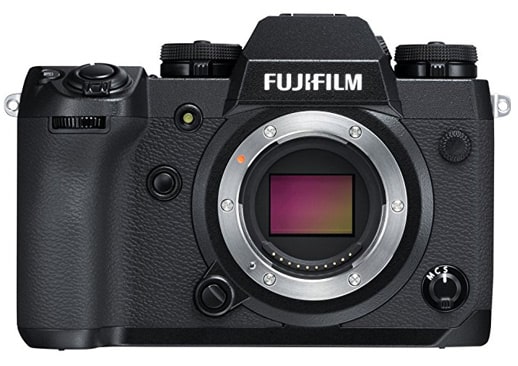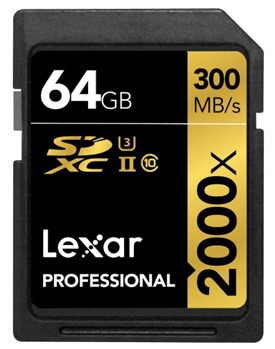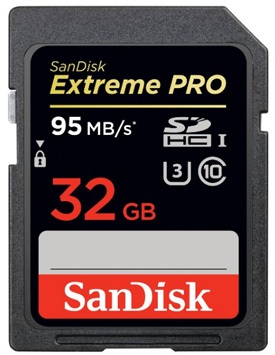Let’s take a look at the best memory cards for Fujifilm X-H1.
The Fujifilm X-H1 sports 2 x SD memory card slots and they both support UHS-II. You can get a UHS-I card which is cheaper, but if you are interested in recording 4K videos or using the burst mode, then get yourself a UHS-II type.
As we usually say, don’t buy just any random cheap card. You risk losing all of your shots, and waiting too long for the buffer to clear. Imagine shooting a wedding, concert, or just traveling, and not being able to take pictures /videos because of your memory card…
In this guide, we’ve selected the 3 best cards. Either one will be great for the Fujifilm X-H1.
Speed Class of SD Cards
| Class | Min. Speed | Our opinion |
| Class 4 | 4MB/s | Too slow for most modern cameras. Skip it. |
| Class 6 | 6MB/s | A little bit better but unless you take 3 pictures a year, skip it. |
| Class 10 | 10MB/s | Good enough for most cameras with 20+ megapixels and Full HD video. |
| U1 (UHS) | 10MB/s | Good enough for most cameras with 20+ megapixels and Full HD video |
| U3 (UHS) | 30MB/s | Perfect for fast burst cameras, Full HD at 60fps and 4K video. This is what you want for the X-H1. |
As mentioned above, the Fujifilm X-H13 supports UHS-II in both slots. Not only does UHS-II make the camera operations faster, it will also be a lot quicker at transferring the files back to your computer. This may not sound like much, but if you send hundreds or thousands of shots weekly, the difference is enormous.
Go with a 32GB or 64GB sized card, and buy a couple of these if you need lots of storage. It’s better than buying one huge card because you risk losing all of your files if that 1 card fails.
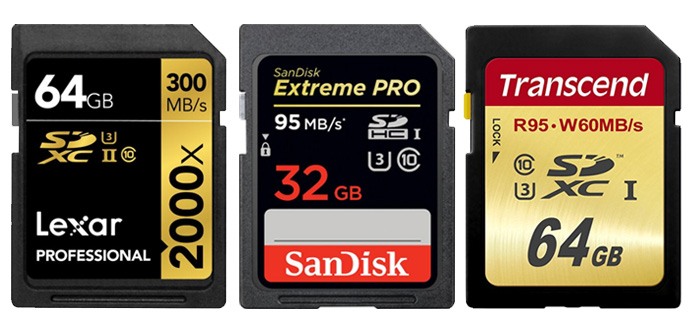
These are the best 3 SDHC/SDXC memory cards you can get:
- Lexar Professional 300MB/s UHS-II U3
- SanDisk Extreme Pro 300MB/s UHS-II U3
- SanDisk Extreme Pro 95MB/s UHS-I U3
Lexar Professional 300MB/s UHS-II U3
The Lexar Professional 300MB/s UHS-II U3 is a UHS-II card, so you can expect the fastest writing and reading speeds with the Fujifilm X-H1. It’s the perfect match for any UHS-II compatible camera that records 4K or has a fast continuous shooting speed. The buffer clearing time will be much much quicker which means you can take more shots. You will also send videos and photographs much quicker to your computer.
Writing speed is around 240MB/s, reading around 270MB/s. More than enough for even the most demanding video coming out of the X-H1..
Don’t have a memory card reader that supports such speeds? Luckily you get a free Lexar UHS-II reader that’ll greatly reduce the waiting time. You also get a free downloadable Imaging Rescue software. It comes in 32GB, 64GB and 128GB sizes.
You can buy it at Amazon or see more reviews here.
SanDisk Extreme Pro 300MB/s UHS-II U3
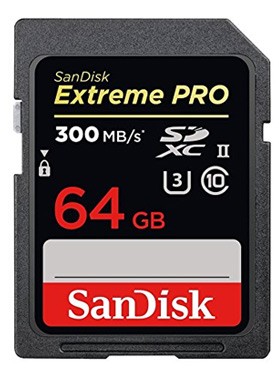
The SanDisk Extreme Pro 300MB/s UHS-II U3 is another UHS-II card that is worth every dollar. SanDisk has been in the memory card game for a longer time, and has more reputation.
However, both cards will get you the same writing and reading speeds. 4K videos, burst shooting at full resolution, it’s an easy task for these two cards. Close your eyes and pick randomly; or, choose the cheaper one (sometimes SanDisk goes for ~$10 less than Lexar).
These two models are literally the best on the market, and have been for some time.
You can buy it at Amazon or see more reviews here.
SanDisk Extreme Pro 95MB/s UHS-I U3
The SanDisk 64GB Extreme Pro 32GB U3 is our favorite card for UHS-I slot. If you won’t record 4K at 60p, you don’t really need the most expensive card. If you want to save some money, then this is your best option. You could also use it in the UHS-II slot and still take pictures normally, but the buffer time won’t be as quick.
The speed makes it perfect for whatever you’re doing; fast bursts with large megapixel cameras, 4K video, let alone Full HD at 60fps. It comes in 16GB, 32GB, 64GB, 128GB and 256GB sizes.
You can buy it at Amazon or see more reviews here.
Comparison of the 3 Memory Cards
| Card | Size | Speed |
| Lexar Professional 300MB/s U3 | 64GB | Writing files: ~240MB/s. Reading files: ~270MB/s |
| Sandisk Extreme Pro 300MB/s U3 | 64GB | Writing files: ~230MBs. Reading files: ~260MB/s |
| Sandisk Extreme Pro 95MB/s U3 | 32GB | Writing files: ~90MBs. Reading files: ~95MB/s |
What Brands are the Best?
Your photographs and videos are stored on a memory card, so you should definitely not try to save any money here by buying from unknown, cheap brands. While you save a few bucks, you probably won’t even get the advertised speeds, and are at a bigger risk of losing your shots.
We see too many beginners choosing the cheap route here, but until you transfer your shots to a computer/online, this is where they’re stored at. You want the memory card to be the most reliable piece of your equipment!
Stick to Sandisk, Lexar, Transcend, Kingston, Sony and Toshiba. There may be a few other good brands out there, but the ones we mentioned are already more than enough and offer great prices.
https://www.youtube.com/watch?v=HZSf2bKp9P0
Last Updated on September 14, 2021 by Nick Voorhees
First and foremost, I’m a husband and father. Then professionally I’m photographer, designer, blogger, and Esty store owner. My homebase is near the stunning Wasatch mountains in Utah but I love traveling with my family as part of our homeschooling journey. I also love teaching and helping out others. My faith is one of the biggest aspects of my life and brings be a consistent joy that I haven’t found in anything else. My main blog is BestPhotographyGear.com and I strive to make photography simple for anyone looking to learn or find gear for their individual needs. By nature, I like to study, research, and analyze things and I use that help provide the best advice and reviews I can.

